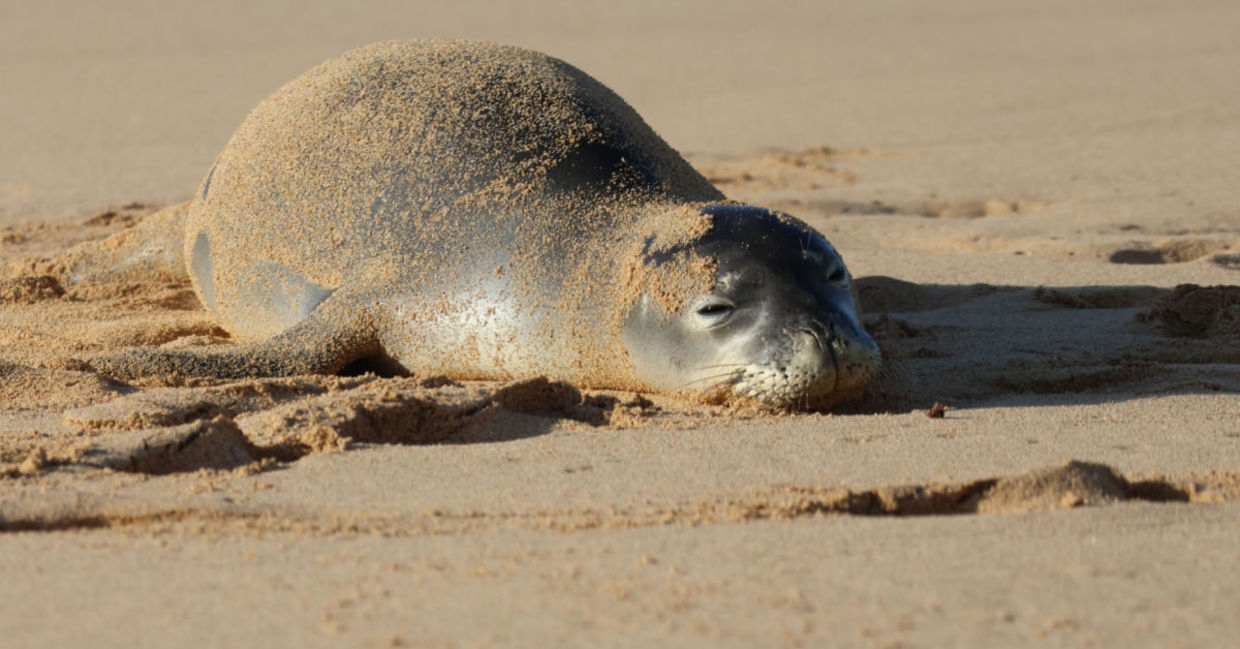
(B.L.Bowen Photography / Shutterstock.com)
According to Hotels.com, the Waikiki neighborhood of Honolulu contains some of Hawaii’s most popular beaches. This pristine sandy strip, and its surfable, crystal clear water used to host Hawaii’s royalty. Now, cafe’s, hotels, and shops welcome holiday-goers to Waikiki's sun, surf, and sand. Sometimes, it’s easy to forget that tourists aren’t the beaches' only denizens.
Hawaii’s sandy shores belong not just to its human visitors, but also to the thousands of rare and wonderful native species that call Hawaii their home. Hawaii's flora and fauna do their part to boost tourism; visitors revel in the beautiful tropical fish, shady palm branches, and magnificent birds that share the islands. Now, tourists will get to do their part in safeguarding the nature they relish in. Hawaii’s visitors are giving a Waikiki beach a wide berth to protect a new monk seal momma and her newborn pup, Usa Today reports.
Protecting Kaiwi’s pup
On April 14, 2023, Kaiwi, a 12-year-old Hawaiian monk seal gave birth to her fifth child. She and her fuzzy, inky-black seal baby will stay together on the beach for next two months or so as she nurses and nurtures the young pup.
"This is an important time for the pair, and we want to ensure (Kaiwi) remains with her pup, and the pup gets the nutrition it needs to develop properly," the National Oceanic and Atmospheric Administration (NOAA) fisheries explained.
In order to allow the pup to grow, learn to swim, and explore its environment securely, Hawaiian officials have closed off the strip of Waikiki beach where Kaiwi and her pup are, AP News shares.
Closing the beach protects the young seal from human contact, but it also protects the tourists. Mother seals will aggressively defend their pups from perceived threats and, last year, a Hawaiian seal mother attacked and lightly injured a tourist who got too close to her baby.
Diana Kramer, the regional marine wildlife response coordinator for the NOAA, tells AP News about the beach closure, “better to select another beach where you don’t have to worry about a seal unexpectedly coming up on you.”
24-Hour police protection
According to the company Travel Awaits, the NOAA isn’t just petitioning tourists to keep their distance. They are taking active measures to protect the baby seal.
A Hawaii Department of Land and Natural Resources Facebook post reads, “A temporary fence has been erected at Kaimana Beach to promote public safety and seal protection during the nursing period.”
In addition to the fence, Jason Redulla, the conservation and resources enforcement division police chief, clarified that law enforcement would maintain a 24/7 presence on the beach, to prevent tourists from sneaking in and endangering themselves or the seal pup.
Officers also plan to patrol the water and keep swimmers 50 years away from the area where the mom and baby seal are nesting.
Hawaii’s monk seals
Hawaii’s officials are taking major steps to protect Kaiwi and her cub because Kaiwi is a member of the most endangered seal species globally. Researchers estimate that there are less than 1,600 Hawaiin monk seals in the world today.
Hawaiian monk seals only have pup per year, giving birth in the spring and summer months. These seal pups will grow to be around seven feet long and around 500 pounds. Hawaiian monk seals live around 30 years.
Susan Chace, a tourist visiting Hawaii’s Waikiki beach, responded to Kaiwi’s pup’s birth. She tells AP News that she is disappointed that the beach is closed, but she supports the officials’ decision. “If it wasn’t for them [the monk seals], the beach won’t be as beautiful,” Chace explained.
The natural beauty of Hawaii and its unique plant and animal species are a major draw for tourists. And, in order to perpetuate Hawaii’s natural beauty into the future, tourists and Hawaii residents alike will need to do their part to preserve Hawaii’s native species.
YOU MIGHT ALSO LIKE:
Lonely Otter Finds Love
Life’s a Hoot for More Animals, Study Finds
Exploring Remarkably Resilient Polar Bears







